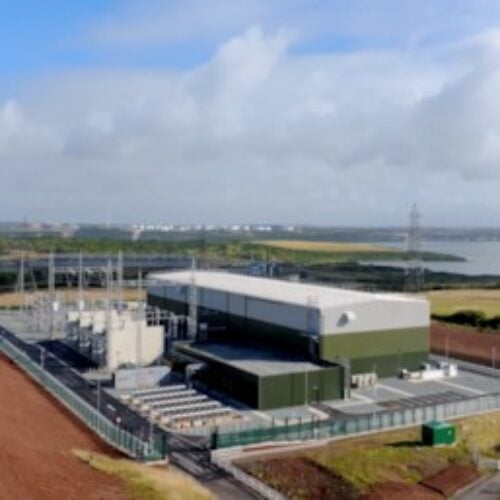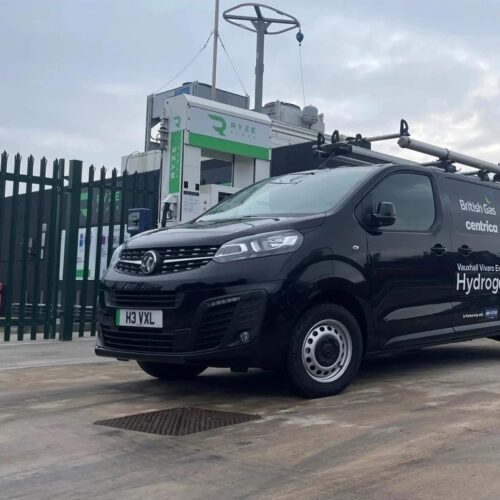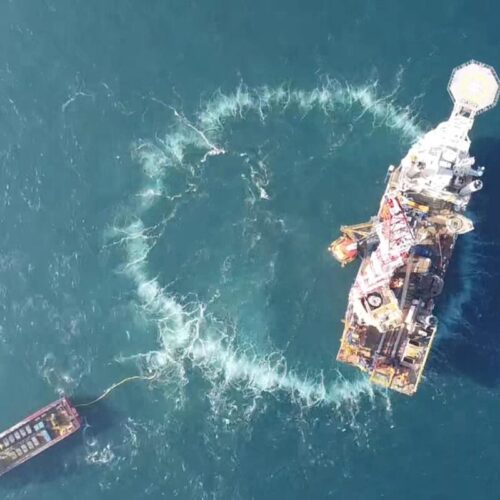Although lithium-ion technology is the most dominant technology used in battery energy storage applications, there are some concerns with the technology, particularly regarding the availability of rare earth elements needed to develop the batteries, fire risks, and recyclability.
A number of battery technologies are emerging to solve these issues: batteries that use sodium-ion chemical mixes, which offer a significant cost saving over lithium; nickel-zinc batteries, which offer long cycle lifespans; and iron-air batteries, a proprietary technology being developed by US company Form Energy, which recently launched its first plans to develop in Ireland.
Additionally, a number of chemical variations on flow battery technology are being developed, which have the advantage of being safer and more easily recyclable than their lithium counterparts. Among these are soluble lead flow batteries.
A UK startup aiming to bring soluble lead flow battery technology to market has drawn the attention of major UK funding schemes. SoLead Energy, founded by Southampton University academics Ewan Fraser, Richard Wills, and Andy Cruden in 2024, was one of eleven firms awarded under the Net Zero Technology Centre’s (NZTC) TechX Clean Energy Accelerator, which will see the company receive a share of a £500,000 funding pool and take part in an 18-week tailored mentorship programme.
At the end of this mentorship programme, SoLead and the other awarded firms will present their technology to potential investors, something which the company hopes will mark the next step in bringing their technology to market.
Ewan Fraser, CEO and co-founder of SoLead, spoke to Current± about how the company is seeking to prove the commercial viability of soluble lead flow batteries in the UK and beyond.
What does SoLead Energy do?
We’re developing a new kind of stationary energy storage for things like integrating renewables or for making the best use of existing grid-connected assets. It’s called the soluble lead flow battery, and we store energy by dissolving lead into a stable water-based electrolyte. It’s got a few advantages – because it’s water-based, there’s no risk of thermal runaway. Because we’re using lead, we can tie into the existing supply and recycling process that already exists at scale for lead acid batteries.
How was the company founded?
We’re actually spinning out from the University of Southampton. The technology has been at Southampton University for several years, and one of our other co-founders, Richard Wills, did his PhD on the technology a number of years ago – he was researching the fundamental chemistry of the technology. Over that time, it’s been developed into the kilowatt scale demonstrator that we’ve got now. In the last year or so, it’s got to the scale where we think it can become something commercial and be useful in the real world.
What are some of your most significant achievements so far?
We’re in the quite early stages, so we’re still in the process of spinning out. One of the big things is getting on to the TechX Accelerator from the Net Zero Technology Centre – that’s been really valuable so far. We have come through the ICUre process as well while we’re at the university, which is an Innovate UK scheme. We’ve also had some help from our on-campus accelerator, Future Worlds. I think those are probably the most important achievements we’ve had so far. We’re quite excited about getting funding into the company properly and starting towards our first pilot – that’s the ambition for us at the moment.
What are the biggest hurdles you need to clear to bring this technology to market?
The big first hurdle is going to be getting a pilot into the real world. We’ve got a demonstrator, and we’re testing that in the lab and on our own property with controlled inputs and outputs, but it’s not connected to any real-world applications. We’re just testing it at the moment, so that first pilot is going to be valuable.
The other side of things is the more commercial side. A key thing we want to do is start growing our team both on the commercial and technical side and really start integrating with customers and developing that product to align with what those customers need, rather than just developing the technology where we see fit.
You’ve had a lot of support from accelerator schemes so far on your journey. What can academic institutions, research councils, and the government do to encourage and support technical innovation in energy storage?
I think schemes like those are really valuable. Our team is largely from an academic background, so introducing those kinds of commercial skills, making sure you’ve got product-market fit, and all the tools you need to do that have been invaluable. We’d be a bit of a lost end without that. I think whether you want to commercialise or not, a bit more alignment generally across research would be good to help us all move towards the same goals.
What would you like to accomplish over the next five years?
In five years’ time, we want to have an array of pilots in different applications. After that stage, the focus is going to be on scaling manufacturing and getting that product out to a mass market. I think five years is probably going to be the point at which we can start doing that – it’s quite a big infrastructure project.
Reliability needs to be proven, so these things take a little while. Ten years from now, we want to really get into the swing of scaling manufacturability. We want to have a factory in place, or at least an assembly line in place. For our technology, making sure that we can get into several different markets across the globe is where we want to be in 10 years’ time.





